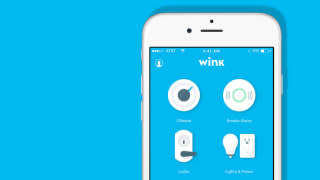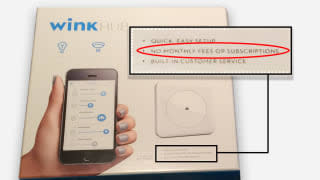Wink Smart Home Users Must Pay Up or Their Devices Will Stop Working

Consumer Reports has no financial relationship with advertisers on this site.
Update: On May 12, 2020, Wink sent an email to customers announcing that it has moved the deadline for users to start paying a monthly fee for its services to May 20, instead of the original deadline of May 13.
This article was originally published on May 7, 2020.
TEST PAGE!! Otherwise, the Wink hubs will stop working—along with many smart home devices connected to them. (If a device has its own app for controlling it, such as a Ring video doorbell, it will still work.)
The news will have come as a shock to users of Wink’s first-generation smart hub who believed the promise on the packaging: “no monthly fees or subscriptions.” Especially if they didn’t read the company’s terms of service, which states that “Wink reserves the right to interrupt the Services with or without prior notice for any reason or no reason” and that Wink has the right “to change and/or eliminate any aspect(s) of the Services as it sees fit in its sole discretion.”

Bill Fitzgerald, privacy policies researcher at CR’s Digital Lab, says that while, technically, Wink is abiding by the terms of service, “those rules are completely outside what most people think of as what’s normal and acceptable—or even possible—when they buy something.”
Justin Brookman, CR’s director of consumer privacy and technology policy at CR, agrees: “Wink is going out of their way to differentiate their product, saying right there on the box: ‘no fees,’ ” he says. “A company can’t just change its mind later. People reasonably relied upon that promise when buying the product. It’s a bait and switch.”
Wink customers aren’t happy. We found Matthew Eccles, a user from Syracuse, Utah, on the Wink subreddit.
“When Wink announced the move to subscription, it wasn’t about the money as much as it was the perceived ransom [they] were wanting, and it felt like extortion as they were going to kill our smart homes in seven days,” Eccles told CR. “A business giving a customer seven days to pay up or else. That hit me hard.” Eccles estimates he has spent over $1,300 on Wink products and compatible devices.
The first-generation Wink Hub and Wink Hub 2 cost $70 and $100, respectively, but Wink users can easily spend much more by connecting additional Wink accessories and third-party devices to their system.
This announcement is just the latest pothole in what has been a very bumpy road for Wink. The company launched in 2014 and was sold off to other companies twice, finally becoming part of the i.am+ tech company founded by rapper Will.i.am.
While Wink managed to survive, its rollout of new products slowly fizzled out. The last major product the company released was a DIY home security system called Wink Lookout, in late 2017. By last fall, The Verge reported that the company hadn’t paid employees in seven weeks and that its customer support phone line was dead at the time.
Neither Wink nor i.am+ returned requests for comment for this story.
Consumer Reports tested the Wink Lookout system last year as part of our new home security system ratings, but when our testing was complete, the Wink Lookout system was out of stock at major retailers and it was unclear when it would again be available for purchase. As a result, we never published its ratings. (It earned a Very Good rating overall.)
What to Do If You Own a Wink Hub
If you want to stay with Wink, you need to update your Wink smart home hub to the latest firmware—any hub running firmware below version 4.1.23 will be permanently disconnected from the Wink network as of May 30, 2020. Then sign up for a subscription on Wink’s website by May 13. You can still sign up after May 13, but your Wink system will stop working until you subscribe.
If you want to switch to another smart home hub, you should first disconnect your devices from the Wink hub. If you don't and the May 13 deadline passes, you can instead reset each device individually and then set them up with a new hub. There are a handful of other smart home hubs you can use, such as Samsung SmartThings, Hubitat, and Vera Control. They’re priced from $30 to $250.
Switching hubs requires that you connect all your smart home devices again, but at least for one Wink user, Bobby Bonestell, it’s worth the trouble. He told us: “I am now shopping for alternative smart home automation solutions and hoping to find and receive the replacement ASAP, in the middle of a global pandemic, not because of the subscription price which Wink is asking but because I feel betrayed by Wink after investing in their hardware, recommending it to friends and colleagues, and seeing all of their products with the text ‘No Monthly Fees’ written right on the box.”
Editors' Note: This story has been updated with information regarding how to set up smart home devices with a new hub.
More from Consumer Reports:
Top pick tires for 2016
Best used cars for $25,000 and less
7 best mattresses for couples
Consumer Reports is an independent, nonprofit organization that works side by side with consumers to create a fairer, safer, and healthier world. CR does not endorse products or services, and does not accept advertising. Copyright © 2020, Consumer Reports, Inc.

